
The best content management systems are intuitive, responsive and provide content managers with essential tools for website analytics and content marketing.
In addition, a good CMS must incorporate the highest standards of security, offer ready-to-use modules and templates that can be easily integrated, and be customizable to account for unique user scenarios. Professional technical support, cross-platform compatibility and scalability are important as well.
Drupal, Magento, WordPress, Shopify are just a few examples of the variety of open-source, enterprise and cloud CMS solutions that exist in the market. Most of these platforms have similar functionality, and it might be difficult to see how they differ from one another. However, understanding the main advantages and disadvantages of each platform is important for picking the one most suitable for your website or app.
In this post, we draw upon our experience at IntexSoft to review some of the most popular CMS platforms. In doing so, we’ll highlight the key features of good content management systems, addressing their pros and cons to help you choose the right one for your specific needs.
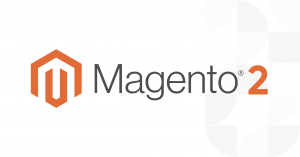
Key advantages of Magento 2 are customization and scalability. That’s probably why over 174,000 websites worldwide use this CMS. Currently, about 12% of all eCommerce websites run on Magento, including brands such as Nike, Ford, and even Liverpool FC. While many think that Magento 2 is all about eCommerce, this is only true for 6.14% of websites built with this CMS.
Their CMS is one of the best content management systems available. It comes in both free open source and paid enterprise editions, with tons of plugins and extensions to integrate with your website. Magento is also available as a cloud eCommerce solution hosted in Amazon Web Services (AWS). Advanced cloud features can be supported by Microsoft Azure, which is used by 95% of fortune 500 companies.
The downside is that transitioning from Magento 1 to Magento 2 is not that simple, as many themes and plugins are not compatible. For eCommerce, this means that the migration process resembles more like the creation of a new online store. While it is possible to transfer the old data, it is necessary to rebuild the store rather than simply update it.
However, PHP7 code architecture makes the revised Magento platform highly scalable and customizable for years to come. In addition, Magento 2 websites load at least 50% faster than other platforms, due to in-built full-page caching and varnish support. Moreover, the platform comes with an advanced SEO suit, routine updates that are released every few months, and the embedded PHPUnit testing framework that helps significantly reduce pre-release defects.
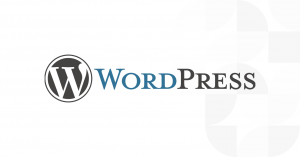
WordPress is currently the most popular open-source content management system in the world, powering approximately 40% of all websites. Companies such as Spotify, Zoom, Etsy, Grammarly, and Salesforce rely on this CMS. WordPress is built with PHP and MySQL and licensed under GNU General Public License, which means anyone can freely use and modify it.
While WordPress originated as a blogging platform, only 6% of people use it solely as a blog. The vast majority (69%) use it as a CMS for many kinds of websites. In addition, WordPress is one of the major eCommerce players. The platform accounts for 28.19% of all online stores, which run on its WooCommerce plugin.
Basically, you can create any type of website with this CMS. There are 54,000+ WordPress plugins that can empower your website with such things as enhanced SEO features, elaborate project management tools, and many more. Some of these plugins are free to us; others come with additional subscription costs.
Due to its plugin architecture and open-source nature, WordPress works equally well for large companies, small businesses, and solitary users alike, as it is highly customizable. However, this customization comes at a price, especially for complex products that require multiple plugin integrations. The more plugins that are required, the higher development and maintenance costs become. In addition, many of these plugins are created by third parties, which increases overall security risks.
Explore WordPress Web Design Companies
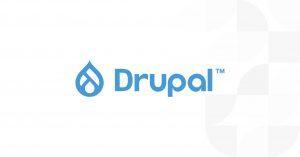
Like WordPress, Drupal is a highly customizable open-source platform with around 46,350 modules and 2,900 themes available. While Drupal is much more difficult to use by non-developers than some other CMSs, this content management system works well for large-scale enterprise solutions and complex applications that require multiple integrations. Drupal is also good for organizing large amounts of data and modifying platform functionality beyond “out-of-the-box” solutions.
Drupal themes and modules are less prone to security risks, as they are covered by the internal security program. This contrasts with WordPress, where malicious code may be imported alone via third-party plugins. Not surprisingly, many government organizations, like NASA and the IRS (Internal Revenue Service), scientific institutions like Princeton University, and educational platforms like Blackboard prefer this CMS.
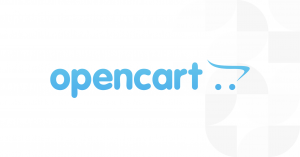
OpenCart has been on the market since 1999. It was developed specifically for eCommerce. This CMS is quite similar to Magento, as it is built on PHP programming language with MySQL database and HTML components.
OpenCart is an open-source content management system with a separate cloud solution for eCommerce hosted by AWS. Small businesses can benefit from using the cloud to reduce their infrastructure expenditures.
In addition, OpenCart is relatively easy to use, install and set up, which makes it one of the best content management systems for small businesses and those new to eCommerce development. Another advantage of the OpenCart CMS is the dedicated support system it offers to all users, both as a one-time fix and for a subscription fee starting at $99 per/month. Potentially, this means less service interruptions and lost revenue for your online store.
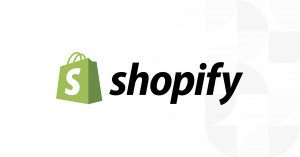
Shopify is one of the best and most popular eCommerce content management systems in the world, with 23% of the market share in the U.S and about 11% worldwide. The platform is quite easy to use and customize, as there are over 6,000 ready-to-use apps to integrate with your online store. This is one of the reasons many startups prefer Shopify. However, many established companies such as Fitbit, Penguin Books, and Hyatt Hotels also choose this CMS.
One of the possible drawbacks of Shopify’s CMS is pricing. Shopify plans vary from $29 to $299 per month in addition to transaction fees that add a 0.5%-2% cost per transaction. Combined with additional costs related to online store management assistance, accounting, customer service, and other tools, these expenditures might be too high for small businesses.
However, one of the clear Shopify advantages is its POS (point of sale) solutions for brick-and-mortar shops. This is a clear benefit for those businesses running both online and retail stores, as you can easily access and manage all the transaction and product data with a single account. While Shopify is not the cheapest eCommerce CMS, it provides 100% transparency for all costs and fees spent on its services, which makes it more predictable in terms of financial planning and ongoing maintenance expenditures.
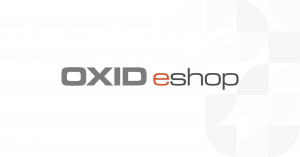
OXID Enterprise only accounts for 0.2% of the global eCommerce CMS market. Nevertheless, together with Magento, OXID is one of the most popular platforms in Germany. With total revenue of over $100 billion in 2021, Germany is the fifth largest eCommerce market in the world. This makes OXID one of the best content management systems and a serious regional competitor to the likes of Magento, WordPress, and Shopify.
OXID has both free open-source Community and paid Enterprise editions. However, the paid Enterprise edition is required to set up multiple stores and individual customization via templates in this CMS. Similarly, B2B features are not available in the free Community edition for OXID.
Another concern is support, which costs 270 euros per month and is mainly in German. Nevertheless, the CMS uses object-oriented programming (OOP) and is highly customizable. OXID employs the Smarty template engine and Symphony PHP framework, which allow creating unique front-end designs and facilitate a faster and easier coding experience.
At IntexSoft, we build websites and apps that run on Drupal, WordPress, Magento 2, Shopify, OpenCart, and OXID Eshop enterprise. Our team is experienced in both CMS customization as well as new feature development. We also assist with CMS integration and data migration to keep your apps and websites up-to-date and running smoothly.
Drop us a line to find out more!